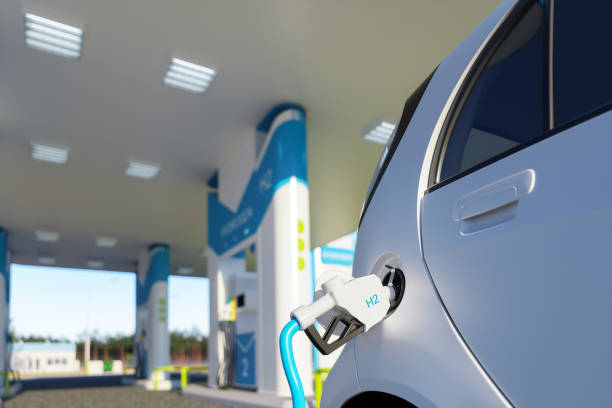How do you choose the best electric SUV for you?
Choosing the best electric SUV for you starts with understanding your priorities—whether that’s range, performance, technology, comfort, or price. With more options than ever on the market, it’s important to compare key factors like battery capacity, charging speed, interior space, and available features. By considering how and where you’ll drive most often, you can find an electric SUV that fits your lifestyle and makes the switch to electric both practical and rewarding.

Key Factors When Selecting Your Electric SUV
When evaluating electric SUVs, several core factors should guide your decision. Range is often the first consideration, as it determines how far you can travel on a single charge. Most modern electric SUVs offer between 350 and 500 kilometers of range, though some premium models exceed this. Consider your typical daily commute and whether you frequently take longer road trips. Charging infrastructure in your area also plays a crucial role. If you have access to home charging, a Level 2 charger can replenish your battery overnight. For those relying on public charging stations, proximity to fast-charging networks becomes more important.
Interior space and cargo capacity matter significantly, especially if you have a family or frequently transport equipment. Electric SUVs vary widely in passenger and cargo room, so test-driving multiple models helps you assess comfort and practicality. Technology features, including driver assistance systems, infotainment interfaces, and smartphone integration, enhance the ownership experience. Safety ratings from organizations like the Insurance Institute for Highway Safety provide valuable insights into crash protection and collision avoidance capabilities.
Comparing Top Electric SUV Models Side by Side
The Canadian market offers diverse electric SUV options, each with distinct strengths. Comparing models directly helps identify which features align with your priorities. Battery size, motor configuration, and all-wheel-drive availability influence performance and handling, particularly in winter conditions common across much of Canada. Some models prioritize efficiency and range, while others emphasize acceleration and towing capacity.
Warranty coverage varies between manufacturers, with battery warranties typically ranging from eight to ten years. Understanding what is covered and for how long provides peace of mind regarding long-term ownership costs. Maintenance requirements for electric vehicles are generally lower than gasoline-powered SUVs, as there are fewer moving parts and no oil changes. However, tire wear can be higher due to the instant torque delivery of electric motors, so factor in potential tire replacement costs.
| Model Category | Estimated Price Range (CAD) | Typical Range (km) | Key Features |
|---|---|---|---|
| Compact Electric SUV | $45,000 - $60,000 | 350 - 450 | Efficient for city driving, smaller footprint, lower cost |
| Mid-Size Electric SUV | $60,000 - $80,000 | 400 - 500 | Balanced space and range, family-friendly, versatile |
| Premium Electric SUV | $80,000 - $120,000+ | 450 - 600+ | Advanced technology, luxury interiors, superior performance |
Prices, rates, or cost estimates mentioned in this article are based on the latest available information but may change over time. Independent research is advised before making financial decisions.
When comparing specific models, consider how each vehicle fits your budget not just at purchase, but throughout ownership. Federal and provincial incentives in Canada can reduce the upfront cost of eligible electric vehicles by several thousand dollars, though these programs have eligibility requirements based on vehicle price and type. Electricity costs for charging are generally lower than gasoline expenses, but rates vary by province and time of day if you have time-of-use billing.
Top Tips for Selecting the Right Electric SUV for You
Start by defining your must-have features versus nice-to-have options. If you regularly drive in harsh winter conditions, prioritize models with efficient heat pump systems, as traditional heating can significantly reduce range in cold weather. All-wheel drive improves traction on snow and ice, though it typically reduces overall efficiency slightly compared to rear-wheel-drive configurations.
Test-drive multiple vehicles in various conditions to understand how they handle, accelerate, and brake. Pay attention to visibility, seat comfort during longer drives, and ease of use for infotainment systems. Regenerative braking, which recovers energy when slowing down, feels different across models. Some offer adjustable levels, allowing you to customize how aggressively the vehicle slows when you lift off the accelerator.
Research the availability of service centers and mobile service options in your region. While electric vehicles require less frequent maintenance, having accessible support for software updates, tire rotations, and occasional repairs ensures a smoother ownership experience. Read owner reviews and forums to learn about real-world experiences, including how well manufacturers handle warranty claims and customer service issues.
Consider your long-term needs as well. If you plan to keep the vehicle for many years, features like over-the-air software updates can extend the functional life of your SUV by adding new capabilities without visiting a service center. Battery degradation is minimal in modern electric vehicles, with most retaining over 80 percent capacity after eight to ten years, but understanding warranty coverage for battery health provides additional security.
Understanding Charging Options and Infrastructure
Charging flexibility significantly impacts daily convenience with an electric SUV. Home charging provides the simplest solution, allowing you to start each day with a full battery. A standard 120-volt outlet charges slowly, adding roughly 6 to 8 kilometers of range per hour, while a 240-volt Level 2 charger can add 40 to 50 kilometers per hour. Installation costs for Level 2 chargers vary, but many provinces offer rebates to offset expenses.
Public charging networks continue expanding across Canada, with fast-charging stations along major highways enabling longer trips. DC fast chargers can replenish 80 percent of battery capacity in 20 to 40 minutes, depending on the vehicle and charger capability. Membership programs and charging apps help locate stations, check availability, and manage payment. Some manufacturers include complimentary charging credits for the first year or two of ownership.
Planning road trips requires more forethought than with gasoline vehicles, but route-planning tools integrated into many electric SUVs automatically suggest charging stops based on your destination and current battery level. As infrastructure improves, range anxiety diminishes for most drivers, particularly those with predictable daily routines.
Choosing the right electric SUV involves careful consideration of your specific needs, budget, and driving patterns. By evaluating range, features, charging options, and total cost of ownership, you can find a model that delivers reliable performance, comfort, and environmental benefits. Take advantage of test drives, research incentives, and compare multiple options to make a confident, informed decision that serves you well for years to come.




